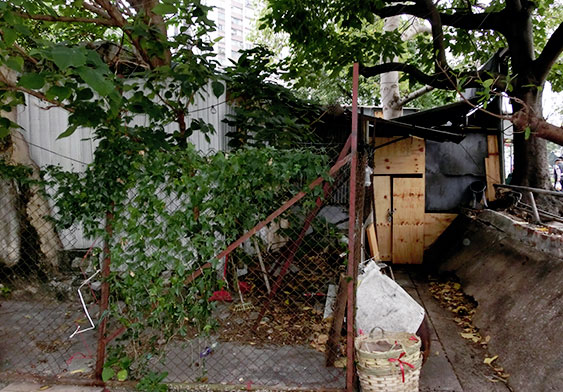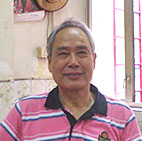
Kong Chi Yin introduces his old home
Kong Chi Yin at the site of his old home at the junction of Nam Pin Street and Tai Hang Street. The Kong family began moving in in the late 1940s with the last members moving out in 1986 -Video taken by HKMP Team (2012)
Kong Chi Yin introduces his old home
Kong Chi Yin at the site of his old home at the junction of Nam Pin Street and Tai Hang Street. The Kong family began moving in in the late 1940s with the last members moving out in 1986 -Video taken by HKMP Team (2012)
Kong Chi Yin moved to Nga Tsin Wai striving to create a shelter for his family
Located around the corner of the front row (Editor’s note: the junction of Tai Hang Street and Nam Pin Street) in Nga Tsin Wai Estate. CY Kong’s home was a single-storey brick house. The ceiling was built with cement and concrete. It came with an air-vent covered with a plank or zinc sheet, which was often blown off in typhoons. Rain water would then leak into the house. CY Kong and his friends from the village built a canopy together. The house had been mended twice or thrice. When CY Kong was a kid, the house had over 10 occupants, including the lodging relatives. In hot weather, his uncles and others would sleep overnight on woodlouse-bearing bedplates outside the house. Rice vermicelli packages were used to make a tent for blocking the sun and mists. In the house, some family members slept in bunk beds that cost 20 or 30 dollars each in those years. Some slept on bedplates lying on long chairs. A long chair was 3 or 4 feet long and about 10 inches wide. Three bedplates could be placed on two combined long chairs. In winter, the whole family were packed inside the house. Yet the relatives’ stay was just temporary. They would move to new homes right after settling down.


 BACK
BACK  CLOSE
CLOSE 